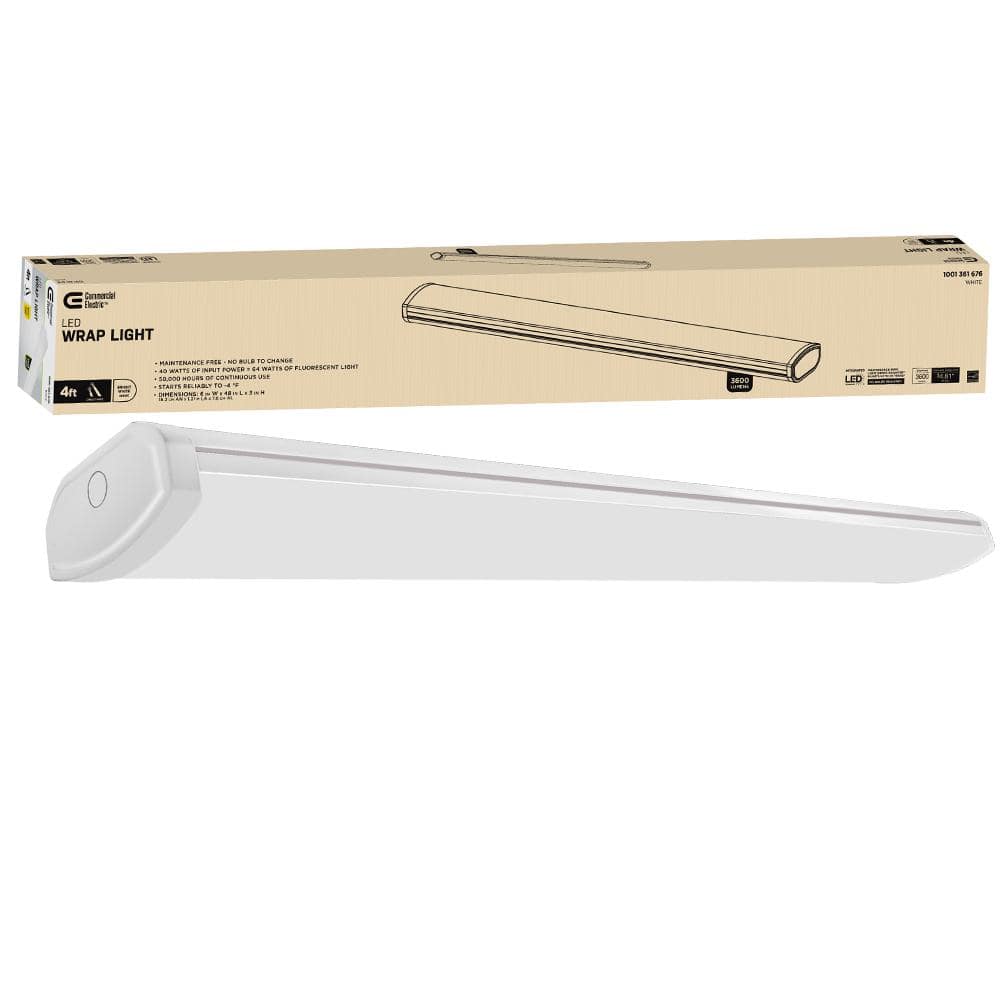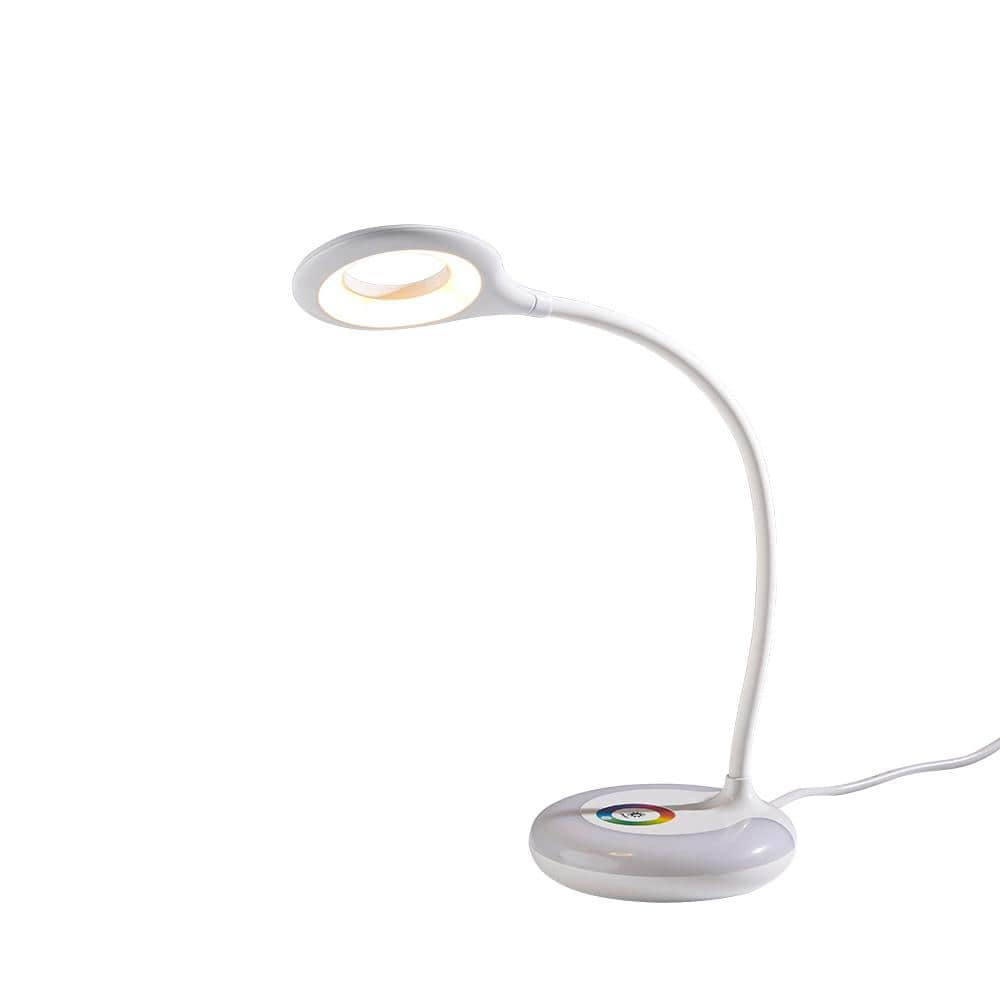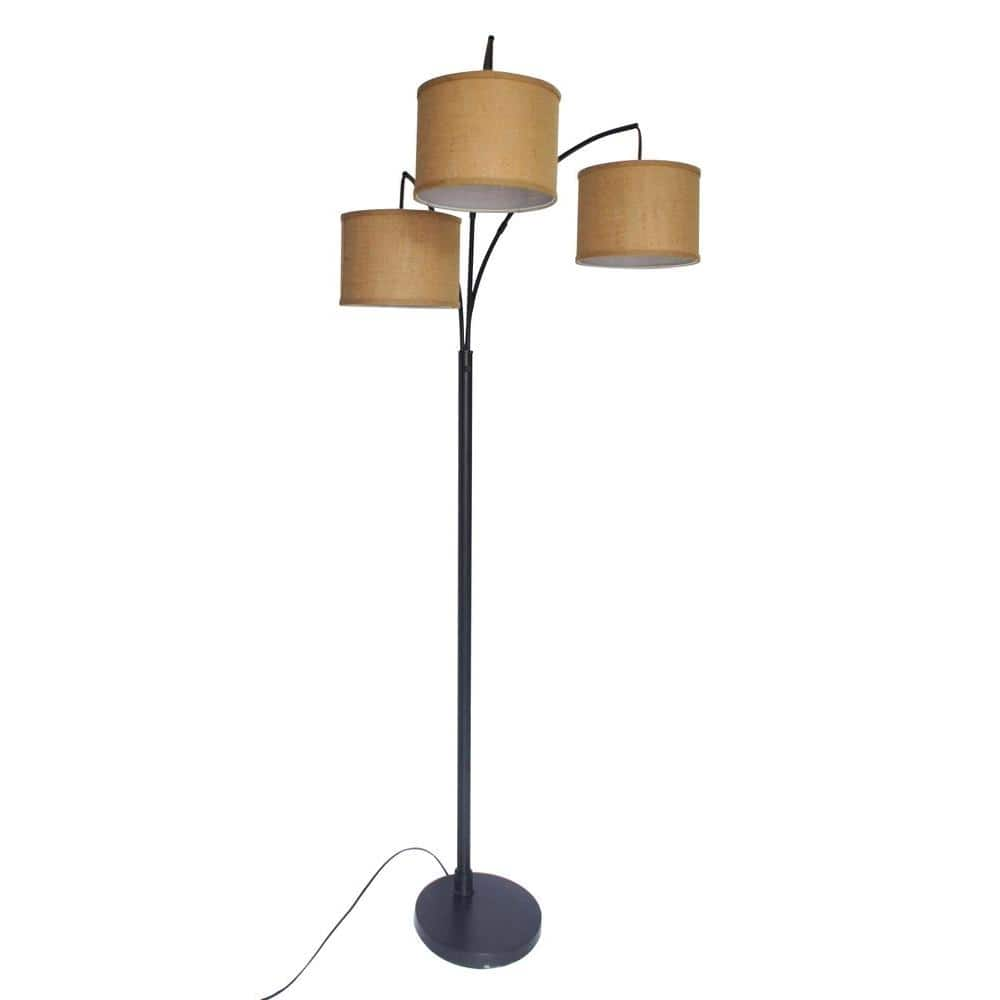Commercial Electric 4 ft. 3600 Lumens LED Wraparound Ceiling Light Garage Light Laundry Room Shop Light 4000K Bright White 120v Hardwire
Continuous row mount with (2) 7/8in. end knockouts. 3600 Lumens, 40-Watts, 4000K, 120v, lasts 50,000 hours. Garage, laundry room, basement, work shop, storage utility room.
Provide ample light coverage in your workshop or storage room with Commercial Electric 4ft. LED Wraparound Ceiling Light. This multi-purpose fixture reduces energy consumption by as much as 79%, producing 3600-Lumens of brightness and 40-Watts of electricity. It emits crystal-clear even light distribution with no discoloration, yellowing or dark spots over time. Made of durable impact-resistant construction and long-lasting service, this LED wrap light is maintenance free with no bulbs to replace. Ideal for laundry room, work bench, closet, stairway, hallway, basement, storage room, utility room, retail, office and more.
- High-impact resistant polycarbonate lens produces even light distribution and no glare
- 3600-lumens of brightness using only 40-watts of electricity
- 4000K bright white color temperature of light output
- Replaces 2 32-watt T8 fluorescent tubes
- Installation: use (2) 7/8 in. knockouts on the fixture to enable wire connections
- Suitable for damp locations
- Operates reliably in sub-0-temperatures down to -4°F up to 113°F
- Product Dimensions: 48 in. L x 5.9 in. W x 2.9 in. H
- Maintenance free with no bulbs to replace
- Rated life up to 50,000-hours
- 5-year warranty
Additional information
| Product Height (in) | 2.99 |
|---|---|
| Product Length (in) | 48 |
| Product Width (in) | 5.98 |
| Manufacturer Warranty | 5 years |






by Nick
Very Easy to install and very bright.
by Eric
Works great in the laundry room!
by Frankie
Went up pretty easily and works great. The most difficult part was getting the translucent cover back on, which was way too hard.
by Dennis
Very good LED lighting. Good modern design.
by Samuel
Really lights up my garage now.
by Ona
My son put this up to replace fluorescent bulb lights in my computer room. WOW what a difference! They are SO bright, and they never flicker or refuse to come on. 🙂
by David
Very good lighting for the garage.